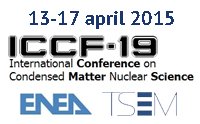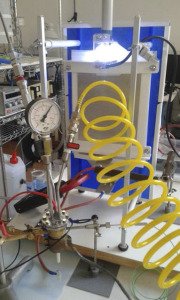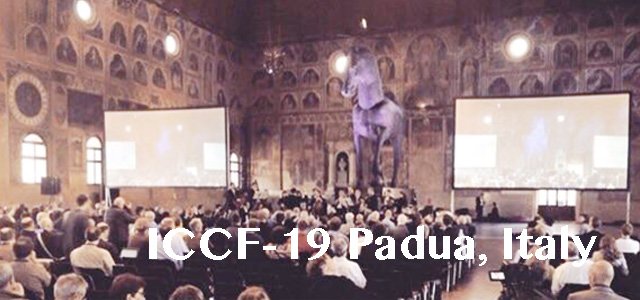 The 19th International Conference on Cold Fusion has closed and attendees are arriving back home.
The 19th International Conference on Cold Fusion has closed and attendees are arriving back home.
“There were many high points,” said Michael McKubre, who spoke at the conference on Cold Fusion for CMNS Present and Projected Future Status.
Steve Katinsky, one of the leaders in the formation of the new LENR Industry Association said, “I would describe an undercurrent of anticipation.”
“Though this is only my third ICCF conference, something intangible was different in Padua,” Katinsky said. “While it is hard to know for sure, perhaps it is the precursor to a tipping point, and a subsequent acceleration of resources and activities in the field.”
Michael McKubre wrote a history of the ICCF conferences for the event, now archived on ICCF19 website. “I wrote the conference histories in groups of three for practical reasons, but these blocks do cycle progressively in tone. ICCF19 was the start of a new cycle and definitely felt that way.”
“I keep fairly abreast of technical progress, so for me the positive results of all conferences, except the first few, have mostly been the aspects of interpersonal bonding and team building. For this conference, with many newcomers, a major benefit was the possibility to get to know members of the next generation,” he said.
Technical talks paired with policy-making

He found the talks on “materials from Coolescence, SKINR and ENEA to be very good. Much progress has been made on understanding experimental procedures to achieve high loading of deuterons into Pd,” he said.
The detailed schedule is posted here.
Katinsky agreed, “The talks and posters overall were very good.”
“Mitchell Swartz’s work that Peter Hagelstein presented in Padua always captures my imagination. David Kidwell in his Q&A talked about having too much He4, and I would like to hear more about that, and I was intrigued by Mark Davidson’s presentation.”

Katinsky said, “There was both formal presentations and posters, and informal conversations and socializing; that together made for a very rewarding conference experience.”
LENR Industry Association is forming
Conversations with Steve Katinsky about the new LENR Industrial Association (LENRIA) were both very productive and pleasant,” Nagel said. “We get a lot done when we can talk.”
Katinsky added, “We had many requests for slides and information on membership, for when it opens. While commercial activity is nascent, this is the right time to get started.”
Asked how they will move forward from here, Katinsky replied, “We are close to having our initial web site up, where people and companies can register to be notified when membership opens. Also, many of the materials we have developed in support of forming the association shall be available there. Next, our efforts shall turn to seeking contributions to help with costs, and to developing our membership and some initial services.”
“Our formation of LENRIA might be somewhat early,” said Nagel, “but that, if so, is wrong in the right direction.”
Biggest crowd yet
A relatively large number of people attended, although the final count is now available yet.
Nagel said, “I also had a good conversation with Lowell Wood, an old friend from Livermore, who has followed this field for many years.”

Katinsky liked “having the opportunity to get to know better the journalist Mats Lewan, Mike Nelson from NASA, Robert Godes of Brillouin Energy Corporation, David Kidwell of NRL and Mel Miles.
“The Great Hall was exquisite and the Orchestral start was sublime,” said McKubre.
However, the large room lacked intimacy.
“There was large attendance in an even larger hall that diminished speaker – audience connection. Overall there was a conspicuous absence of in-depth discussion and the configuration and acoustics were not particular;y conducive.”
“A lot of original attendees were prevented from attending by age or worse, and a lot of new faces were present. Obviously the presence of many new faces is only good but it meant that many old questions needed to be asked and answered again.”
Open Power collaborated with MFMP in Parkhomov Padua
One group had wanted to present their work to the community, but were not able to be scheduled in the program.
Luciano Saporito of the Open Power Association said, “We are ready to talk about our work everywhere we will have invitation: but our patent speaks for itself…”
“We are engaged in experiments,” said Ugo Abundo, a lead researcher at Open Power.

Nevertheless, Open Power participated.
“In perfect style of Open collaboration, we contributed along with MFMP during a Parkomov replication at Padua during the Conference.”
“As Bob Greenyer said: ‘We would very much like to work together with you again. I was VERY impressed with the willingness to help in Italy in general.'”
What’s next?
The results of the conference remain to be seen, but participants are going home with a big to-do list.
“From here it is a short step to victory,” says McKubre. “Resources are entering the field. If we can find some commonality of action to ensure that the sum is greater than the parts then we will all win. I am highly encouraged.”
“One of the highlights of ICCF19 definitely was ICCF20. With the next continental rotation returning to Asia (and Oceania) it was surprising and unprecedented that four countries were seriously interested in hosting the next conference: China, Japan, India, Russia.”
“The IAC was faced with the happy need to make the diplomatic decision to hold the primary conference at Tohoku University in Sendai, on the East Coast of Japan, with a satellite meeting follow on meeting at Xiamen University on the East Coast of China.”





